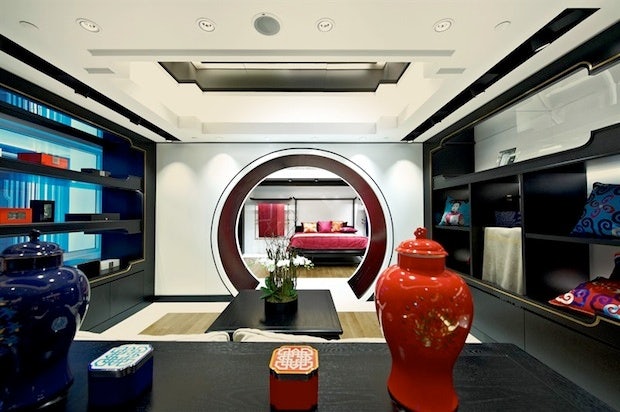As Its HK Flagship Marks Its One-Year Anniversary, The Pioneering Label Makes A Case For Homegrown Luxe#

Shanghai Tang Mansion on Duddell Street, Hong Kong.
Since its founding in 1994, Shanghai Tang has staked out a distinctive niche in the luxury-brand landscape—a canny hybrid of Western-style marketing and smart, tradition-with-a-twist Chinese design. Now, as sophisticated mainland consumers look beyond logos to more individual fashion statements, Shanghai Tang is poised for growth in key China markets—and perhaps for emergence as a market-shaping Chinese luxury brand.
In a profile of the marque published this week, Ambika Behal situates Shanghai Tang in a broader international context:
China’s luxury market is set to become the second-largest in the world, after Japan, in the second half of this decade. Growth is currently expected to be at about 10-15 % in 2013, according to a CLSA report released in February.
Interestingly, however, Chinese luxury consumers prefer to buy well-known brands from the fashion capitals of the West such as Paris, Milan and London, says Frost & Sullivan China Consulting Director Julia Zhiu. In China perception is everything. Brands like Louis Vuitton and Gucci are ubiquitous here. Western luxury brands have made it big in China with targeted promotional strategies and visible branding.
The success of foreign luxury brands can also be attributed to the fact that China itself is a fledgling luxury market with a limited number of homegrown brands, says Zhiu. Domestic luxury brands in China such as apparel brand NE Tiger and liquor company Maotai have little recall outside their home country, she says.
Shanghai Tang may be changing this paradigm. With its clear and youthful brand image, design and innovation, a global retail network and operation capabilities, the company has managed to attain a surprising level of success—usually unexpected from a domestic Chinese company, she says.
The article goes on to outline the factors that will likely lead to Shanghai Tang’s increasing success with mainland consumers, including the brand’s relatively affordable luxe positioning and “proudly made in China” aesthetic. As for “definitive,” the jury is still out, says Behal, but as mainland markets continue to shift, Shanghai Tang remains a brand to watch.